#Smartphone accelerometer
Explore tagged Tumblr posts
Text
https://www.futureelectronics.com/p/semiconductors--analog--sensors--accelerometers/lis2mdltr-stmicroelectronics-5090146
3-Axis Digital Magnetic Sensor, 3 axis accelerometers, Mems accelerometers
LIS2MDL Series 3.6V 50 Hz High Performance 3-Axis Digital Magnetic Sensor-LGA-12
#Sensors#Accelerometer Sensors#LIS2MDLTR#STMicroelectronics#3-Axis Digital Magnetic Sensor#3 axis accelerometers#Mems#phone#Smartphone accelerometer#Accelerometer applications#programmable accelerometer#Digital accelerometer#USB accelerometer
1 note
·
View note
Text
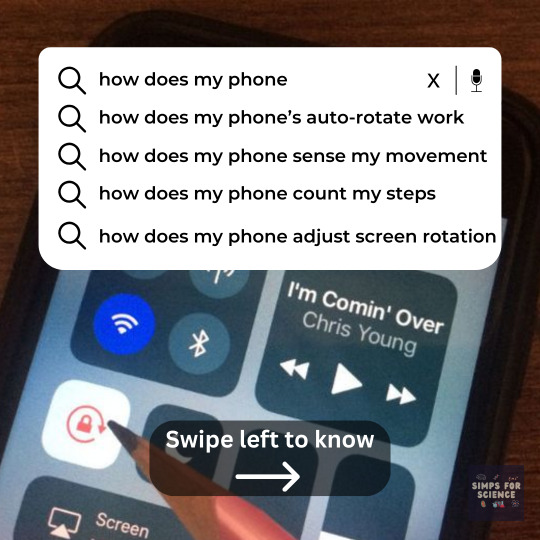
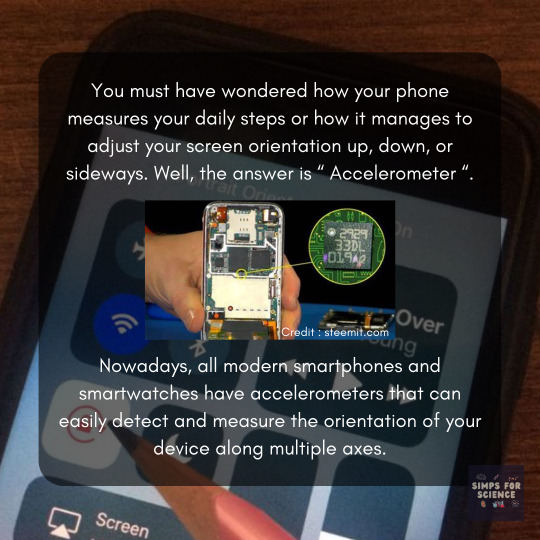
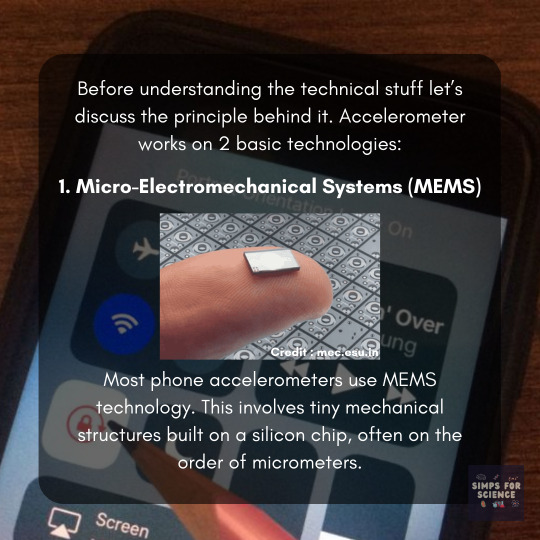
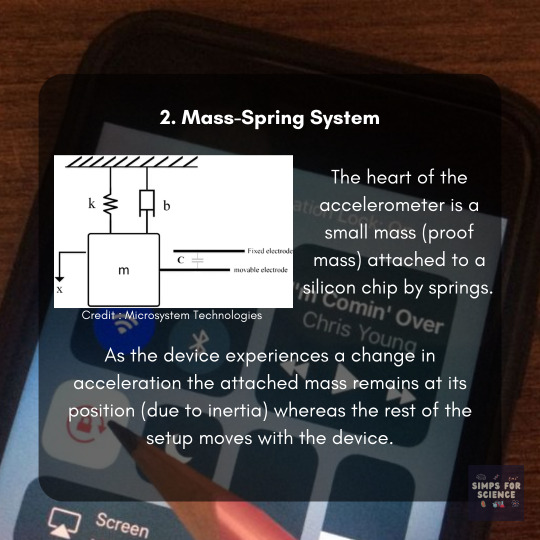
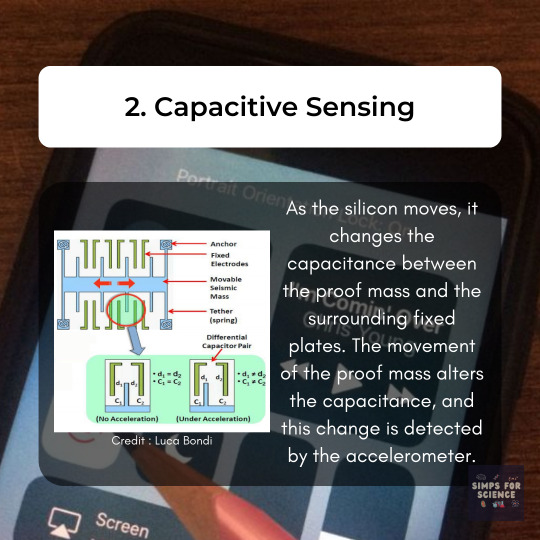
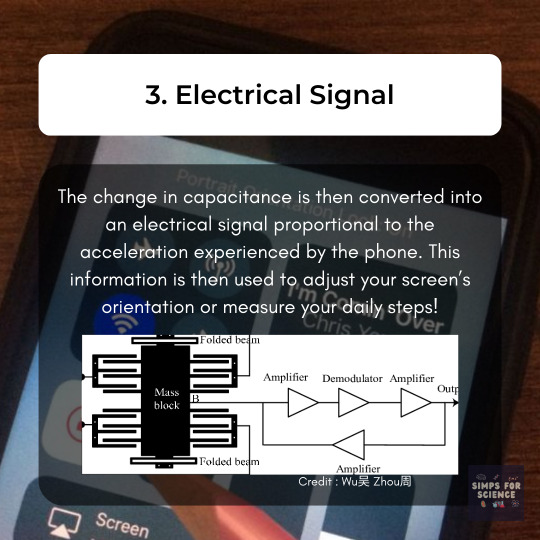
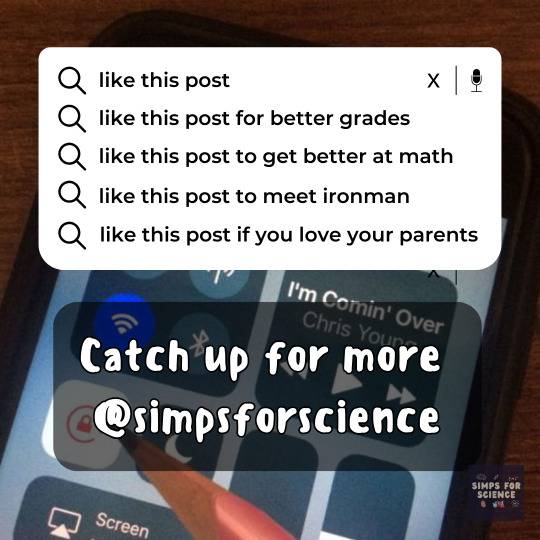
How does your phone 📲 know you turned into a landscape artist?👩🏻🎨 Can you outsmart its rotation sense? We notice this happen several times a day, sometimes wonder🤔 about the how and then let it just slip from the mind within a few seconds. Swipe through this post to unfold 📖the tech behind this magic trick !🪄🎩
#accelerometer#microelectronics#technology#techgeek#tech#phone#engineering#physics#devices#electronics#education#science#science facts#study blog#discover#scicomm#research scientist#explore#smartphone#smartwatch#capacitors#cool science#simps for science
11 notes
·
View notes
Note
If the smartphone had to lose one 'core feature' (not just an app from the app store, something ~big) what do you think would be the smallest loss?
hmm, some smartphone features: dust resistance, water resistance, accelerometer, gps module, audio card, speakers, cameras, flashlight, headphone jack, multi-touch, haptic feedback, vibration in general, microphone, read aloud/talkback, live transcription, live captions, spam call blocking...
of that list i could stand to lose talkback, but it's an accessibility feature. maybe i could live without haptic feedback but it would suck. also i didn't list a bunch of other features cause im lazy
12 notes
·
View notes
Text
Difference Between Augmented Realtiy And Virutal Reality Comparing Two Revolutionary Technologies
Difference Between Augmented Reality (AR) and Virtual Reality (VR) are awesome immersive technologies that have captured the creativity of both the generation industry and clients. Though they proportion similarities in their capacity to modify how we perceive and interact with the sector, AR and VR are basically exceptional in their technique and use cases. This essay explores the center variations between AR and VR, focusing on their definitions, technological mechanisms, hardware necessities, person interplay, use cases, and destiny ability.

Definitions and Core Concepts
AR complements the person's notion of reality by way of including digital elements that interact with the physical environment. The key concept in the back of AR isn't always to replace the physical international but to enhance it, imparting a blend of virtual and actual-world experiences. Examples of AR can be visible in phone applications like Pokémon Go, wherein users can see digital creatures within the actual international through their smartphone cameras, or Snapchat filters, wherein virtual outcomes are applied to human faces.
Virtual Reality (VR), on the other hand, creates entirely immersive digital surroundings that replace the actual international. When the use of VR, customers are transported into a totally laptop-generated international that may simulate real-world environments or create entirely fantastical landscapes. This virtual environment is commonly experienced through VR headsets, which include the Oculus Rift or PlayStation VR, which block out external visual input and offer 360-diploma visuals of the virtual space. The number one purpose of VR is to immerse users so absolutely in a virtual environment that the distinction between the digital and actual worlds temporarily dissolves.
Technological Mechanisms
AR and VR rent distinct technological mechanisms to acquire their respective experiences. In Augmented Reality, the primary mission is to combine the actual international with digital elements in a manner that feels seamless and natural. This requires tracking the user’s function and orientation in the actual global, which is generally executed through the use of cameras, sensors, and accelerometers in smartphones or AR glasses. The AR software procedures the visual entry from the digital camera and superimposes virtual objects into the proper function in the actual international scene. The gadget also needs to make sure that these objects interact with real-world factors in plausible ways, such as having a virtual ball soar off an actual table or aligning a digital map on the floor. Real-time processing is important to keep the illusion that digital factors are a part of the actual world.
In contrast, Virtual Reality includes developing a totally immersive virtual global that absolutely replaces the user's actual-international surroundings. The VR device desires to render a three-D environment in real-time, imparting unique views because the person's actions their head or body. This is generally performed with the use of state-of-the-art image engines and powerful processors, which simulate lighting fixtures, textures, and physics to make the digital world as realistic as feasible. A VR headset affords stereoscopic shows (one for every eye) to provide the phantasm of depth, and movement-tracking sensors ensure that the user’s actions—including looking around or walking—are meditated appropriately within the virtual international. VR requires excessive constancy in visuals and coffee latency to save you from movement sickness and hold a sense of presence within the virtual international.
Hardware Requirements
The hardware necessities for AR and VR additionally differ notably. For AR, the hardware can be enormously minimal. Since AR overlays digital statistics onto the real world, devices like smartphones or drugs with built-in cameras and GPS capabilities are regularly enough for fundamental AR packages. More superior AR reviews and those related to 3-D holograms or complex interactions may require specialized AR headsets like Microsoft HoloLens or Magic Leap, with additional sensors for depth belief and environmental mapping.
In VR, the hardware setup is typically more concerned. In the middle of any VR reveal in is a headset, which provides the necessary presentations and motion tracking to create an immersive environment. High-give-up VR systems, such as those for gaming or expert simulations, may also require outside sensors, hand controllers, and occasionally even treadmills or haptic remarks devices to simulate physical movement and touch in the virtual global. The computing strength required to run VR applications is also drastically higher than AR, often demanding powerful portraits playing cards, and processors to render the three-D environments in real-time.
User Interaction
User interplay is another place wherein AR and VR vary extensively. In AR, user interaction typically occurs inside the real international, with digital elements appearing as extensions or improvements of actual-world gadgets. For example, a person may interact with a digital man or woman in AR by moving their phone around or the usage of hand gestures to control virtual gadgets. The interaction is often context-sensitive, relying on the person’s bodily surroundings as part of the experience. AR is regularly extra informal and reachable because it may be experienced with everyday gadgets like smartphones. In VR, the interaction is fully immersive and takes vicinity in the digital global. Users can interact with the digital surroundings with the use of specialized controllers or, in some instances, hand-monitoring sensors that map the person’s actions into the virtual space. For instance, in a VR game, the user might physically swing their arms to wield a sword or pass their frame to stay away from an attack. VR interplay tends to be extra excessive and calls for a higher degree of engagement for the reason that user is absolutely enveloped inside the digital surroundings. Use Cases
The use instances for AR and VR additionally highlight their fundamental variations. In industries like retail, AR allows customers to peer how products, along with furniture or clothing, could look of their very own houses or on their bodies before making a buy. AR is also famous in schooling and education, in which it is able to provide actual-time information or visible aids in a bodily surrounding. For instance, clinical students would possibly use AR to visualize a virtual anatomy overlay on a real human frame, improving their mastering experience.
VR, alternatively, is right for applications that require general immersion. In gaming, VR permits gamers to enjoy a heightened experience of presence in fantastical worlds, together with flying via area or preventing dragons. In schooling and simulation, VR is used in fields like aviation and the army, in which practical virtual environments can simulate excessive-threat eventualities without placing the user in actual threat. VR is also gaining traction in fields like structure and design, in which it lets designers and clients discover virtual fashions of homes and areas before they are constructed. Future Potential
The destiny capability of AR and VR is extensive, although each technology is in all likelihood to conform in distinct directions. AR is anticipated to end up extra pervasive as cell devices and wearables emerge as superior. The development of lightweight, low-priced AR glasses may want to make it a ubiquitous tool for ordinary obligations, together with navigation, communique, and data retrieval. AR may also revolutionize fields like healthcare, production, and logistics by supplying people with actual-time facts and guidance overlaid on their physical surroundings. VR is likely to persist increase in regions that advantage of immersive reports, such as leisure, training, and far-off collaboration. As VR headsets emerge as lower priced and wireless, the barriers to huge adoption may lessen, making VR a not unusual tool for each expert and personal use. In a long time, the traces between AR and VR may blur as combined truth (MR) technologies—inclusive of the ones being advanced with the aid of corporations like Meta (previously Facebook) and Microsoft—combine factors of both.

Conclusion
While AR and VR both provide immersive reports that adjust the way we perceive the sector, they do so in fundamentally one-of-a-kind approaches. AR enhances our interplay with the actual international by way of overlaying virtual content, whilst VR creates totally new virtual environments that update the real global. Their variations in technology, hardware, interplay, and use instances reflect the unique strengths of every, making them ideal for different applications. Both AR and VR hold extensive potential for the destiny, promising to reshape industries and ordinary lifestyles in ways we're simply beginning to discover.
2 notes
·
View notes
Text
POWERUP 4.0 is a kit that attaches to handmade paper planes converting them to RC flying machines. Fold your paper into the classic paper plane shape then attach the motorized propeller to your plane, and finally with the help of the POWERUP app fly. Equipped with 2 sensors a gyro and an accelerometer for a smoother flight experience. You can ascend and descend, and tilt left and right using a smartphone or tablet. Maneuver the plane via Bluetooth with a flight time of up to 10 minutes per charge. POWERUP 4.0 starts at $59.99 on Amazon
3 notes
·
View notes
Text
Robotics Project Ideas for All Skill Levels: From Beginner to Advanced
Beginner Projects
Line Following Robot
Description: A robot that follows a pre-defined path marked by a line on the floor. The line can be of any color, but black on a white background is commonly used.
Components: Microcontroller (like Arduino), IR sensors, DC motors, motor driver, chassis, wheels.
Learning Outcomes: Basic electronics, sensor integration, and motor control.
Obstacle Avoidance Robot
Description: A robot designed to navigate its environment and avoid obstacles. It uses sensors to detect objects in its path and changes direction to avoid collisions.
Components: Ultrasonic sensors, microcontroller, motors, motor driver, chassis, wheels.
Learning Outcomes: Understanding of sensor data processing, basic programming, and control systems.
Bluetooth-Controlled Robot
Description: A robot that can be controlled via a smartphone or other Bluetooth-enabled devices. Commands are sent wirelessly to move the robot in different directions.
Components: Bluetooth module, microcontroller, motors, motor driver, chassis, wheels.
Learning Outcomes: Wireless communication, mobile app development, microcontroller programming.
Voice-Controlled Robot
Description: A robot that responds to voice commands, allowing you to control its movements through spoken instructions.
Components: Microphone, speech recognition module, microcontroller, motors, motor driver, chassis, wheels.
Learning Outcomes: Introduction to speech recognition, interfacing sensors, and control mechanisms.
Light Following Robot
Description: A robot that follows a light source. It can be used to follow a flashlight or navigate toward a lighted area.
Components: Light sensors, microcontroller, motors, motor driver, chassis, wheels.
Learning Outcomes: Sensor integration, basic electronics, programming.
Before next read this Robotic Revolution
Intermediate Projects
Self-Balancing Robot
Description: A robot that maintains its balance on two wheels, similar to a Segway. It uses sensors to detect its tilt and adjusts the motors to stay upright.
Components: Gyroscope, accelerometer, microcontroller, motors, motor driver, wheels.
Learning Outcomes: Understanding of feedback control systems, sensor fusion, and motor control.
Robotic Arm
Description: A robotic arm capable of performing simple tasks like picking and placing objects. It can be controlled manually or programmed to follow a sequence of movements.
Components: Servo motors, microcontroller, various sensors (like pressure or touch), structural components.
Learning Outcomes: Kinematics, servo control, programming for sequential tasks.
Maze-Solving Robot
Description: A robot that can navigate through a maze and find the exit. It uses algorithms to decide the best path and avoid dead ends.
Components: IR or ultrasonic sensors, microcontroller, motors, motor driver, chassis, wheels.
Learning Outcomes: Algorithm implementation, sensor data interpretation, navigation strategies.
Remote-Controlled Spy Robot
Description: A small robot equipped with a camera that can be controlled remotely to explore and send live video feed.
Components: Wireless camera, microcontroller, motors, motor driver, chassis, wheels, remote control.
Learning Outcomes: Wireless video transmission, remote control systems, motor and sensor integration.
Line Following Robot with Obstacle Detection
Description: A robot that not only follows a line but also detects and avoids obstacles on its path. It combines line following and obstacle avoidance features.
Components: IR sensors, ultrasonic sensors, microcontroller, motors, motor driver, chassis, wheels.
Learning Outcomes: Integration of multiple sensor data, complex programming logic, advanced control systems.
Advanced Projects
Humanoid Robot
Description: A robot designed to resemble a human body. It can perform tasks like walking, speaking, and interacting with its environment.
Components: Servo motors, microcontroller, sensors (accelerometer, gyroscope), structural components.
Learning Outcomes: Advanced kinematics, complex control algorithms, humanoid robotics.
Autonomous Delivery Robot
Description: A robot that can autonomously navigate to deliver packages within a designated area. It uses GPS and other sensors to determine its location and avoid obstacles.
Components: GPS module, ultrasonic sensors, camera, microcontroller, motors, motor driver, chassis, wheels.
Learning Outcomes: Autonomous navigation, path planning, integration of multiple sensors.
Robotic Exoskeleton
Description: A wearable robotic suit that can assist with movement, enhancing the strength and endurance of the user.
Components: Servo motors, sensors (like pressure, motion), microcontroller, structural components.
Learning Outcomes: Biomechanics, actuator control, wearable robotics.
Quadruped Robot
Description: A four-legged robot capable of walking, running, and navigating various terrains. It mimics the movement of animals like dogs or cats.
Components: Servo motors, microcontroller, sensors (accelerometer, gyroscope), structural components.
Learning Outcomes: Gait analysis, dynamic stability, complex movement programming.
Swarm Robotics
Description: A group of small robots that work together to complete tasks. They communicate and coordinate to achieve goals like collective exploration or object transport.
Components: Multiple small robots, communication modules, microcontroller, various sensors.
Learning Outcomes: Distributed systems, communication protocols, cooperative robotics.
2 notes
·
View notes
Text
Emulator vs. Real Device Testing: What Should You Choose?
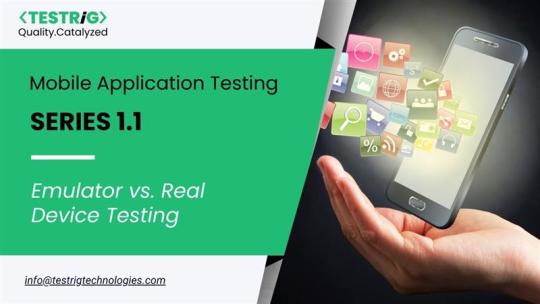
In our first article of the Mobile Application Testing series, we introduced the core concepts of mobile testing—highlighting how mobile apps must be tested across multiple platforms, screen sizes, networks, and user behaviors. We also emphasized how fragmented mobile environments increase the complexity of quality assurance, making robust mobile device testing strategies essential.
Building on that foundation, this blog focuses on one of the most critical decisions mobile testers face:
Should you test your app using emulators or real devices?
Both approaches serve essential roles in mobile QA, but each comes with its own set of advantages, limitations, and ideal use cases. Understanding when and how to use emulator vs real device testing can make your testing strategy more effective, scalable, and cost-efficient.
What is Emulator Testing?
An emulator is a software-based tool that mimics the configuration, behavior, and operating system of a real mobile device. Developers often use Android emulators (from Android Studio) or iOS simulators (from Xcode) to create virtual devices for testing purposes.
These emulators simulate the device’s hardware, screen, memory, and operating system, enabling testers to validate apps without needing physical smartphones or tablets.
✅ Advantages of Emulator Testing
Cost-Effective No need to invest in purchasing or maintaining dozens of physical devices.
Quick Setup Developers can quickly spin up multiple virtual devices with various screen sizes, OS versions, or languages.
Integrated Debugging Tools Emulators are deeply integrated with IDEs like Android Studio and Xcode, offering extensive logs, breakpoints, and performance analysis tools.
Faster for Early Testing Ideal for initial development phases when functionality, UI alignment, or basic workflows are being verified.
❌ Limitations of Emulator Testing
Lack of Real-World Accuracy Emulators can’t replicate real-world conditions like varying network speeds, incoming calls, push notifications, or sensor behavior.
Poor Performance Testing Capability Metrics like battery drainage, CPU usage, and memory leaks are not accurately reflected.
Incompatibility with Some Features Features relying on Bluetooth, NFC, camera APIs, or fingerprint sensors often fail or behave inconsistently.
What is Real Device Testing?
Real device testing involves testing mobile applications on actual smartphones or tablets—physical devices users interact with in the real world. This method allows teams to validate how an app performs across different OS versions, device models, network types, and environmental factors.
✅ Advantages of Real Device Testing
True User Experience Validation You get a real-world view of app performance, responsiveness, battery usage, and usability.
Reliable Performance Testing Tests such as scrolling lag, animations, and touch responsiveness behave authentically on real devices.
Sensor and Hardware Interaction Testing features like GPS, camera, gyroscope, accelerometer, and biometric authentication is only possible on real hardware.
Detect Device-Specific Bugs Certain bugs appear only under specific hardware or manufacturer configurations (e.g., MIUI, Samsung One UI), which emulators might not catch.
❌ Limitations of Real Device Testing
Higher Cost Maintaining a physical device lab with hundreds of devices is expensive and often impractical for small or mid-sized teams.
Manual Setup and Maintenance Devices must be updated regularly and maintained for consistent results.
Scalability Issues Executing automated test suites across many real devices can be time-consuming without proper infrastructure.
When Should You Use Emulators or Real Devices?
The most effective mobile testing strategies combine both approaches, using each at different phases of the development lifecycle.
✔ Use Emulators When:
You’re in the early development phase.
You need to test across multiple screen resolutions and OS versions quickly.
You're writing or debugging unit and functional tests.
Your team is working in a CI/CD environment and needs quick feedback loops.
✔ Use Real Devices When:
You're close to the release phase and need real-world validation.
You need to verify device-specific UI bugs or performance bottlenecks.
You’re testing features like Bluetooth, GPS, camera, or biometrics.
You're evaluating battery consumption, network interruptions, or gesture interactions.
Bridging the Gap with Cloud-Based Testing Platforms
Maintaining a large in-house device lab is costly and hard to scale. This is where cloud-based mobile testing platforms help. These services provide access to thousands of real and virtual devices over the internet—letting you test across multiple platforms at scale.
🔧 Top Platforms to Know
1. BrowserStack
Offers instant access to 3,000+ real mobile devices and browsers.
Supports both manual and automated testing.
Integration with Appium, Espresso, and XCUITest.
Real-time debugging, screenshots, and video logs.
2. AWS Device Farm
Lets you test apps on real Android and iOS devices hosted in the cloud.
Parallel test execution to reduce test time.
Supports multiple test frameworks: Appium, Calabash, UI Automator, etc.
Integrates with Jenkins, GitLab, and other CI tools.
3. Sauce Labs
Offers both simulators and real devices for mobile app testing.
Provides deep analytics, performance reports, and device logs.
Scalable test automation infrastructure for large teams.
Final Thoughts: What Should You Choose?
In reality, it’s not Emulator vs Real Device Testing, but Emulator + Real Device Testing.
Each serves a specific purpose. Emulators are ideal for cost-effective early-stage testing, while real devices are essential for true user experience validation.
To build a reliable, scalable, and agile mobile testing pipeline:
Start with emulators for fast feedback.
Use real devices for regression, compatibility, and pre-release validation.
Leverage cloud testing platforms for extensive device coverage without infrastructure overhead.
At Testrig Technologies, we help enterprises and startups streamline their mobile QA process with a combination of emulator-based automation, real device testing, and cloud testing solutions. Whether you're launching your first app or optimizing performance at scale, our testing experts are here to ensure quality, speed, and reliability.
0 notes
Text
Price: [price_with_discount] (as of [price_update_date] - Details) [ad_1] The Nothing Phone (2a) redefines smartphone design with its bezel-less display, providing an immersive viewing experience. It is powered by a Snapdragon processor & 8GB RAM for smooth performance, whether you're multitasking or gaming. With 128GB of internal storage, expandable up to 1TB, you'll have ample space for all your photos, videos, & apps. The 64MP quad-camera setup allows you to capture detailed photos, while the 5000mAh battery ensures long-lasting usage. The phone also features a sleek & ergonomic design, along with enhanced security features such as face recognition & a rear fingerprint sensor. Running on the latest Android 12 operating system, the Nothing Phone (2a) offers a smooth user experience, & with 5G connectivity, you can enjoy fast download & upload speeds for seamless streaming & gaming. Nothing Phone 2a mobile was launched on 5th March 2024. The phone comes with a 120 Hz refresh rate 6.70-inch touchscreen display offering a resolution of 1080x2412 pixels (FHD+) at a pixel density of 394 pixels per inch (ppi). It comes with 8GB, 12GB of RAM. The Nothing Phone 2a runs Android 14 & is powered by a 5000mAh battery. The Nothing Phone 2a supports proprietary fast charging. As far as the cameras are concerned, the Nothing Phone 2a on the rear packs a dual camera setup featuring a 50MP primary camera, & a 50MP camera. It has a single front camera setup for selfies, featuring a 32MP sensor. The Nothing Phone 2a runs Nothing OS 2.5 is based on Android 14 & packs 128GB, 256GB of inbuilt storage. The Nothing Phone 2a measures 161.74 x 76.00 x 8.55mm (height x width x thickness) & weighs 190.00 grams. It was launched in Black & White colours. Connectivity options on the Nothing Phone 2a include Wi-Fi 802.11 a/b/g/n/ac, GPS, & USB Type-C with active 4G on both SIM cards. Sensors on the phone include accelerometer, ambient light sensor, compass/ magnetometer, gyroscope, proximity sensor, & fingerprint sensor. The Nothing Phone 2a supports face unlock 8 GB RAM | 128 GB ROM 17.02 cm (6.7 inch) Full HD+ Display [ad_2]
0 notes
Text
Europe Wearable Sensor Market Size, Revenue, End Users And Forecast Till 2028
The Europe wearable sensor market is expected to reach US$ 1,109.30 million by 2028 from US$ 411.09 million in 2021. The market is estimated to grow at a CAGR of 15.2% from 2021 to 2028.
Market Overview
Hands-free wearable technology helps deliver real-time information to device users. Mobile device original equipment manufacturers (OEMs) aggressively invest in wearable devices to offset declining margins in their traditional smartphone and tablet markets. As a result, the wearable sector has been flooded with various smart bands, smartwatches, and other wearable devices with machine-to-machine (M2M) offerings capable of collecting, sending, and processing data over mobile applications.Furthermore, the integration of M2M technology with wearable medical devices improves their flexibility and scalability. Due to the various benefits of IoT, AR, and M2M technologies, the demand from various applications such as healthcare and consumer electronics. Also, this increasing demand is projected to lead market players to invest and innovate more products related to these technologies, such as Xiaomi AR smart glasses. Thus, the increasing penetration of AR, IoT, and M2M technologies in smart wearables is creating future trends for the market. The Europe wearable sensor market is expected to grow at a good CAGR during the forecast period.
Grab PDF To Know More @ https://www.businessmarketinsights.com/sample/BMIRE00025224
Europe Wearable Sensor Strategic Insights
Strategic insights for the Europe Wearable Sensor provides data-driven analysis of the industry landscape, including current trends, key players, and regional nuances. These insights offer actionable recommendations, enabling readers to differentiate themselves from competitors by identifying untapped segments or developing unique value propositions. Leveraging data analytics, these insights help industry players anticipate the market shifts, whether investors, manufacturers, or other stakeholders. A future-oriented perspective is essential, helping stakeholders anticipate market shifts and position themselves for long-term success in this dynamic region. Ultimately, effective strategic insights empower readers to make informed decisions that drive profitability and achieve their business objectives within the market.
Market leaders and key company profiles
Texas Instruments Incorporated.
NXP Semiconductor.
Analog Devices Inc.
STMicroelectronics.
Infeneon Technology.
Sensirion AG.
Robert Bosch GmbH.
Panasonic Corporatin.
TE Connectivity Corporation.
TDK corporation.
Europe Wearable Sensor Regional Insights
The geographic scope of the Europe Wearable Sensor refers to the specific areas in which a business operates and competes. Understanding local distinctions, such as diverse consumer preferences (e.g., demand for specific plug types or battery backup durations), varying economic conditions, and regulatory environments, is crucial for tailoring strategies to specific markets. Businesses can expand their reach by identifying underserved areas or adapting their offerings to meet local demands. A clear market focus allows for more effective resource allocation, targeted marketing campaigns, and better positioning against local competitors, ultimately driving growth in those targeted areas.
Europe Wearable Sensor Market Segmentation
The Europe wearable sensor market is analyzed on the basis of sensor type, application, vertical, and country. Based on sensor type, the market is segmented into accelerometer, gyroscope, position sensor, motion sensor, image sensor, pressure and force sensor, touch sensor, and others. The accelerometer segment dominated the market in 2020.Based on application, the market is segmented into smart wristwear, smart glass, smart bodywear, and smart footwear. The smart wristwear segment led the market in 2020.Based on vertical, the market is segmented into consumer electronics, healthcare, and industrial and enterprise. The consumer electronics segment dominated the market in 2020.
About Us:
Business Market Insights is a market research platform that provides subscription service for industry and company reports. Our research team has extensive professional expertise in domains such as Electronics & Semiconductor; Aerospace & Defence; Automotive & Transportation; Energy & Power; Healthcare; Manufacturing & Construction; Food & Beverages; Chemicals & Materials; and Technology, Media, & Telecommunications.
0 notes
Text
Gyro Sensor: Everything You Need to Know About This Advanced Motion-Sensing Technology
Gyro sensors, also known as gyroscopic sensors or angular rate sensors, play a critical role in a wide range of modern technologies—from smartphones and gaming consoles to autonomous vehicles and industrial machinery. These sensors measure angular velocity, which allows systems to detect orientation, maintain balance, and track motion with remarkable precision. In this detailed guide, we delve deep into the workings, applications, and benefits of gyro sensors to provide you with a comprehensive understanding of their importance in today’s digital and mechanical world.
What Is a Gyro Sensor?
A gyro sensor is an electronic device that detects the rate of rotation around a particular axis. It helps systems determine orientation and rotational motion by using the principles of angular momentum. Unlike accelerometers that measure linear motion, gyro sensors are essential for sensing rotational dynamics.
There are several types of gyro sensors, including:
MEMS gyroscopes (Micro-Electro-Mechanical Systems)
Fiber optic gyroscopes
Ring laser gyroscopes
Vibrating structure gyroscopes
Each type has unique characteristics suitable for different applications, ranging from compact consumer electronics to high-precision aerospace systems.
How Do Gyro Sensors Work?
At the core of most modern gyro sensors, especially MEMS gyroscopes, is the principle of Coriolis Effect. When an object rotates, the Coriolis force is exerted on a vibrating structure inside the sensor. This force causes a change in the vibration direction, which the sensor interprets to calculate the angular velocity.
The steps involved in gyro sensor operation include:
A tiny mass inside the sensor vibrates at a consistent frequency.
When rotation occurs, the Coriolis force alters the path of the vibration.
This deviation is detected by capacitive or piezoelectric elements.
The sensor processes this data to determine angular speed.
Key Features of a Gyro Sensor
When choosing or designing a system with a gyro sensor, understanding its critical features is essential. The most notable features include:
High sensitivity to angular velocity changes
Low noise and drift for stable performance
Compact size and low power consumption, especially in MEMS versions
Wide operating temperature range
3-axis sensing capability for comprehensive motion tracking
These attributes make gyro sensors ideal for embedded systems and portable electronics, where both performance and space-saving designs are vital.
Applications of Gyro Sensors in Modern Technology
1. Smartphones and Tablets
Modern smartphones rely heavily on gyro sensors for functions such as:
Auto-rotation of the screen
Gesture-based control
Augmented reality (AR) and virtual reality (VR) features
Enhanced camera stabilization
Combined with accelerometers and magnetometers, gyroscopes form the foundation of Inertial Measurement Units (IMUs) used in mobile devices.
2. Automotive Industry
In vehicles, gyro sensors are pivotal for:
Electronic Stability Control (ESC)
Anti-lock Braking Systems (ABS)
Inertial navigation systems
Autonomous driving and Advanced Driver Assistance Systems (ADAS)
They ensure safety, enhance vehicle dynamics, and provide real-time feedback for intelligent driving systems.
3. Aerospace and Aviation
Precision and reliability are paramount in aerospace applications. Gyro sensors are used for:
Attitude and heading reference systems (AHRS)
Flight control and stabilization
Satellite orientation and navigation
Here, ring laser gyroscopes and fiber optic gyroscopes offer high precision with minimal drift over time.
4. Gaming and Virtual Reality
Gyro sensors have revolutionized the gaming industry by enabling:
Motion-sensing controllers
Head tracking in VR headsets
Realistic 3D movement simulations
This immersive experience is made possible through accurate real-time orientation detection.
5. Robotics and Drones
Autonomous robots and drones depend on gyroscopic feedback to:
Maintain balance
Navigate accurately in 3D space
Compensate for external disturbances like wind
Gyro sensors are integral to IMU-based navigation systems in UAVs and mobile robots.
Advantages of Using Gyro Sensors
Gyro sensors offer several advantages, making them indispensable across multiple sectors:
Real-time precision: Immediate detection of orientation changes
Compact and cost-effective: Especially true for MEMS gyroscopes
Reliable over time: High-end models maintain calibration and reduce drift
Integration-ready: Easily embedded in modern electronics
Their ability to work in conjunction with other sensors like accelerometers and magnetometers enhances the accuracy of orientation and positioning systems.
Challenges and Limitations of Gyro Sensors
While gyro sensors are versatile, they do come with limitations:
Sensor drift: Over time, small errors can accumulate, affecting long-term accuracy.
Temperature sensitivity: Extreme temperature changes can impact sensor performance.
Complex calibration: To maintain precision, especially in dynamic environments.
However, combining gyroscopes with other sensors in sensor fusion algorithms (e.g., Kalman filters) helps overcome these issues effectively.
Future Trends in Gyro Sensor Technology
The evolution of gyro sensors continues to push boundaries. Key trends include:
Miniaturization and integration: Smaller, more energy-efficient sensors are being developed for wearables and IoT devices.
Improved AI algorithms: Machine learning is enhancing sensor calibration and data interpretation.
Advanced fusion systems: Combining gyro data with GPS, cameras, and LiDAR for improved situational awareness in autonomous systems.
Quantum gyroscopes: A cutting-edge innovation that uses quantum mechanics to achieve ultra-high accuracy without external references.
These advancements ensure that gyro sensors will remain a cornerstone of technological progress in motion tracking and spatial awareness.
Choosing the Right Gyro Sensor for Your Application
Selecting the appropriate gyro sensor depends on your specific application needs. Consider the following criteria:
Precision required (e.g., consumer-grade vs. aerospace)
Cost constraints
Size and power requirements
Environmental conditions (e.g., shock, temperature, vibration)
Axis configuration (single-axis or tri-axis)
Understanding these factors ensures optimal performance and longevity of the motion detection system in your product.
Conclusion
Gyro sensor is a transformative components in today's motion-sensitive world. From enhancing user experience in smartphones to ensuring safety and precision in autonomous vehicles and aerospace, their role cannot be overstated. As innovation continues, the capabilities and applications of gyro sensors will expand, opening new doors in automation, robotics, and immersive digital experiences.
0 notes
Text
How Mobile App Testing Differs from Web App Testing

In today’s digitally-driven world, businesses operate across multiple platforms to ensure broad user engagement and seamless experiences. Among these platforms, web and mobile applications dominate the landscape, each offering distinct functionalities and user experiences. To ensure the success of any digital application, rigorous testing is imperative. However, testing a mobile app significantly differs from testing a web app due to the inherent variances in technology, user interaction, device compatibility, performance considerations, and deployment processes.
This article explores the critical differences between mobile app testing and web app testing and highlights how intelligent testing platforms like genqe.ai streamline and enhance both processes.
1. Platform Diversity and Device Fragmentation
One of the most apparent differences between mobile and web app testing is the level of platform and device fragmentation.
Mobile App Testing
Mobile apps must be tested across various devices, each with different screen sizes, resolutions, hardware capabilities, and operating systems. For example, Android phones alone come in thousands of models with variations in manufacturer customization, OS versions, and performance specs. iOS devices, though more limited in variety, still present fragmentation challenges due to different generations of iPhones and iPads.
This fragmentation necessitates testing on a wide spectrum of devices to ensure a consistent and reliable user experience.
Web App Testing
Web apps, on the other hand, are generally accessed through browsers, making testing relatively less complex in terms of device diversity. The main focus is on browser compatibility — Chrome, Firefox, Safari, Edge, etc. — across different operating systems like Windows, macOS, and Linux. Though browser rendering engines may behave differently, the testing scope is typically narrower compared to mobile.
Key Difference: Mobile testing must account for a broader variety of devices and configurations, while web testing emphasizes browser compatibility.
2. User Interaction and Interface Testing
Mobile App Testing
Mobile apps utilize touchscreen gestures, including swipes, pinches, taps, long-presses, and accelerometer-based controls. Testing must therefore verify all these interactions work smoothly across devices. Moreover, apps must handle scenarios such as incoming calls, push notifications, or changes in connectivity (e.g., switching from Wi-Fi to mobile data).
Web App Testing
Web apps rely mostly on mouse clicks, keyboard input, and basic navigation. Though responsive design adds some complexity, particularly when web apps are accessed on tablets or smartphones, the interactions are more predictable and limited compared to mobile apps.
Key Difference: Mobile app testing requires thorough validation of touch-based gestures and device behaviors, while web app testing is centered around traditional input methods.
3. Installation and Distribution
Mobile App Testing
Mobile applications need to be installed on a device, either via the App Store (iOS), Google Play (Android), or sideloaded for testing purposes. Installation testing ensures that the app installs correctly, updates without issues, and uninstalls cleanly.
Additionally, developers must consider app store guidelines and approval processes, which can affect deployment timelines.
Web App Testing
Web apps are accessed via URLs and do not require installation. Updates can be pushed instantly without needing end-user interaction. This simplifies the deployment and testing cycle, as testers can access the latest version directly in their browsers.
Key Difference: Mobile apps require installation testing and adherence to app store protocols, while web apps offer easier, real-time deployment and access.
4. Performance and Resource Constraints
Mobile App Testing
Mobile devices operate under strict resource constraints — limited memory, CPU power, battery life, and network stability. Performance testing must evaluate how the app behaves under low memory conditions, battery drainage, CPU load, or weak signal strength. Testing must also account for latency and performance across different types of network connections (2G, 3G, LTE, 5G, Wi-Fi).
Web App Testing
While web apps also require performance testing, they typically run on more stable environments with ample resources, such as desktop computers or laptops. Internet connection consistency is also higher for web app users.
Key Difference: Mobile apps need rigorous performance testing under varied resource and connectivity constraints, whereas web apps often operate in more controlled and stable environments.
5. Security Considerations
Mobile App Testing
Security testing for mobile apps includes data storage, secure API usage, permission handling, and prevention of data leaks. Mobile apps may store sensitive information on the device, requiring encryption and secure sandbox environments. Permissions for camera, location, contacts, etc., must be explicitly tested to avoid privacy violations.
Web App Testing
Web app security involves validating session management, preventing cross-site scripting (XSS), SQL injection, and ensuring secure data transmission. While both platforms demand strict security measures, mobile apps face unique challenges due to local storage and frequent offline access.
Key Difference: Mobile apps face additional security concerns related to device-level data handling and permissions, while web apps focus more on server-side and browser-based threats.
6. Offline Functionality and Sync Testing
Mobile App Testing
Many mobile applications support offline access, storing data locally and syncing with the server once connectivity resumes. Testing must ensure data consistency, conflict resolution, and correct behavior during intermittent connectivity scenarios.
Web App Testing
Web apps generally require an internet connection to function. Though Progressive Web Apps (PWAs) introduce some offline capabilities, this remains less common than in mobile environments.
Key Difference: Offline functionality and data synchronization are critical in mobile app testing, whereas web apps typically rely on continuous connectivity.
7. Update and Regression Testing
Mobile App Testing
Mobile app updates often involve new APK/IPA versions that must be downloaded and installed. Testers need to verify that new updates do not break existing functionality, especially across different OS versions and device types. Regression testing is time-consuming due to the need to validate against multiple configurations.
Web App Testing
Since web applications are updated on the server, testers can immediately validate changes. Automated regression testing is more straightforward, and issues can be fixed and redeployed quickly.
Key Difference: Mobile updates are more complex and fragmented, requiring broader regression coverage. Web apps allow for quicker, centralized updates.
8. Testing Methodologies and Automation
While both web and mobile applications benefit from manual and automated testing, mobile testing introduces unique challenges due to hardware and platform diversity. Writing stable and reusable automated tests for mobile apps is harder due to UI inconsistencies across devices.
Platforms like genqe.ai provide an intelligent and scalable approach to both mobile and web app testing. By leveraging AI-driven test generation, real-time test execution, and smart analytics, genqe.ai empowers teams to reduce manual effort while maintaining high test coverage.
Its unified testing framework supports both mobile and web applications, enabling testers to create and manage test cases, execute across different environments, and receive actionable insights — all from one intelligent interface. This is especially valuable for teams maintaining cross-platform applications who seek consistency and efficiency in their testing strategies.
Conclusion
Mobile app testing and web app testing are fundamentally different disciplines, each with its own set of challenges and best practices. From platform fragmentation to performance constraints, mobile testing is significantly more complex and multifaceted than web testing. Conversely, web apps benefit from streamlined deployment and a more predictable environment, but still require rigorous testing for compatibility and security.
Understanding these differences is essential for QA professionals, developers, and product managers. With intelligent testing platforms like genqe.ai, teams can overcome the traditional limitations of cross-platform testing and ensure robust, user-centric applications in both mobile and web ecosystems.
Whether you’re launching a dynamic web portal or a responsive mobile app, your testing strategy should align with the unique demands of the platform — and genqe.ai provides the tools to do just that with precision, speed, and intelligence.
0 notes
Text
Smart Watch Price in Bangladesh
Smart Watch Price starts from BDT 1,490 to BDT 101,000 in Bangladesh, depending on brand, model, and features. Order your desired smart watch online from popular brands like Apple, Xiaomi, Amazfit, Kieslect, Fastrack, etc & get delivery to your doorstep.

Smart Watch in Bangladesh With remarkable features and unique computing technologies, smart watches are more than just a time-teller device. From celebrities to civilians, everyone uses smart watches every day to improve their style and productivity. Users need to connect and synchronize their smart watches with smartphones. Smart watches are self-standing devices with different purposes of use as some watches collect data to track users’ health, steps, and heart rate, and monitor human gestures like shaking, jumping, or tapping. These data are mostly collected through sensors like Accelerometers and gyroscopes, SpO2 oxygen sensors, Skin Temperature Sensor, and Heart Rate Monitor. Some watches collect data for navigation and direction through technologies like GPS. Furthermore, having Wifi and Bluetooth connectivity with LED/OLED displays, users get a clear vision of the performance of smart watches. Star Tech offers the high-quality smart watches of leading brands at an affordable to premium price for every customer in Bangladesh.
0 notes
Text
Global MEMS Market Set for Steady Growth at 4.4% CAGR Through 2034

The global Micro‑electromechanical System (MEMS) market was valued at US$ 17.7 billion in 2023. Driven by innovations across healthcare, consumer electronics and automotive sectors, the industry is projected to expand at a CAGR of 4.4 percent between 2024 and 2034, reaching an estimated value of US$ 28.6 billion by December 2034. MEMS technology integrates microscopic mechanical and electrical components such as sensors, actuators and control electronics into single chip‐scale devices that detect and react to environmental stimuli including motion, pressure, temperature and chemical changes. As miniaturization, cost‑efficiency and performance demands intensify, MEMS finds new applications from smartphones to implantable medical diagnostics.
Download to explore critical insights from our Report in this sample - https://www.transparencymarketresearch.com/sample/sample.php?flag=S&rep_id=86128
Market Drivers & Trends
Innovative Medical Solutions: The rise in non‑communicable diseases and an aging global population fuels demand for compact, accurate medical devices. MEMS‑based point‑of‑care systems enable rapid diagnostics at the bedside or in remote settings, reducing turnaround time and improving patient outcomes.
Consumer Electronics Adoption: Accelerometers, gyroscopes and micro‑compasses are standard in smartphones, wearables and AR/VR headsets. MEMS‑based inertial measurement units (IMUs) enhance electronic and optical image stabilization, motion sensing and user interface controls. Proliferation of 5G networks (over 1 billion subscriptions by end‑2022) further drives high‑frequency MEMS integration in next‑gen mobile devices.
Automotive & EV Integration: Stringent safety and emission regulations boost MEMS sensors for advanced driver‑assistance systems (ADAS), tire pressure monitoring and EV battery management. MEMS devices offer high reliability under harsh engine conditions, aiding in lightweight, energy‑efficient designs.
Latest Market Trends
Miniaturization & Integration: Fabrication at 1–100 µm scale allows fully integrated MEMS chips with on‑board processing, reducing PCB footprint and power consumption.
Multi‑Parameter Sensing: Hybrid MEMS sensors capable of measuring pressure, humidity, gas composition and temperature on a single die are gaining traction in industrial IoT and environmental monitoring.
Bio‑MEMS for Wearables: Flexible, biocompatible MEMS platforms for continuous glucose, lactate and sweat analysis are emerging, driven by demand for personalized health monitoring.
3D Packaging & System‑in‑Package (SiP): Advanced packaging techniques enable stacking MEMS devices with CMOS logic, offering modular solutions that balance performance and cost.
Key Players and Industry Leaders The competitive landscape features a mix of semiconductor giants, specialized MEMS firms and emerging innovators:
Analog Devices, Inc.
Broadcom
Goertek Microelectronics Inc.
Honeywell International Inc.
Infineon Technologies AG
Knowles Electronics, LLC.
Murata Manufacturing Co., Ltd.
OMRON Corporation
Panasonic Corporation
Qorvo, Inc
Robert Bosch GmbH
STMicroelectronics
TDK Corporation
Texas Instruments Incorporated
Goertek Inc.
Sensata Technologies, Inc.
Melexis
Amphenol Corporation
Recent Developments
Jan 2023 – TDK Corp. announced the SmartSound One Development Platform, offering plug‑and‑play evaluation for multiple MEMS microphone configurations.
Jan 2023 – Knowles Corp. launched its Titan, Falcon and Robin MEMS microphone series, targeting space‑constrained ear‑wearable applications.
Mar 2024 – STMicroelectronics introduced a hybrid pressure‑and‑temperature MEMS sensor for industrial IoT nodes, enabling remote monitoring with enhanced accuracy.
Apr 2024 – Analog Devices unveiled a next‑gen MEMS IMU with on‑chip sensor fusion, reducing system‑level calibration by 50 percent.
Market Opportunities and Challenges Opportunities
Healthcare Expansion: Development of implantable MEMS pumps and bio‑chips for organ‑on‑chip research.
5G & Edge AI: Integration of MEMS sensors with edge‑AI accelerators for real‑time analytics in smart cities and autonomous systems.
Green Mobility: MEMS‑based flow and pressure sensors for hydrogen fuel cells and EV thermal management.
Challenges
Manufacturing Complexity: High‑volume, defect‑free MEMS fabrication demands advanced cleanroom processes and wafer‑level packaging, increasing capital expenditure.
Standardization: Lack of universal MEMS interface standards complicates system integration across different OEMs and end‑use industries.
Supply Chain Disruptions: Geopolitical tensions and raw‑material shortages may impact silicon and specialty substrate availability, potentially delaying product launches.
Future Outlook Looking ahead to 2034, the MEMS market will be shaped by converging trends in miniaturization, AI‑enhanced sensing and sustainable manufacturing. By mid‑2030s, novel materials such as graphene‑based membranes and piezoelectric polymers could unlock ultra‑sensitive gas and biosensing platforms. Cross‑industry collaborations—between semiconductor foundries, healthcare providers and automotive OEMs—will accelerate tailored MEMS solutions, while democratized design tools (MEMS CAD libraries) will broaden participation from startups. Overall, the outlook remains positive: annual revenue growth above 4 percent, with pockets of double‑digit expansion in biomedical and automotive electric‑mobility applications.
Market Segmentation
By Type
Accelerometers
Gyroscopes
Digital E‑compasses
Temperature, Pressure, Humidity Sensors
MEMS Microphones
Inertial Measurement Units (IMUs)
Others (Spectrum, Optical)
By Actuation
Thermal, Magnetic, Piezoelectric, Electrostatic, Chemical
By End‑Use Industry
Automotive, Consumer Electronics, Defense, Aerospace, Industrial, Healthcare, IT & Telecom, Others (Agriculture, Energy)
By Region
North America, Europe, Asia Pacific, Middle East & Africa, South America
Regional Insights Asia Pacific leads the global MEMS market, accounting for the largest share in 2023 due to:
Smartphone & 5G Penetration: High adoption of 5G services and smartphone shipments in China, India, South Korea and ASEAN.
Automotive Manufacturing Hub: Strong presence of EV and auto component OEMs integrating MEMS for ADAS and battery management.
Industrial Automation: Rapid Industry 4.0 deployments in China, Japan and South Korea fueling demand for MEMS‑based IoT sensors. North America and Europe follow, driven by healthcare innovation clusters (Boston, Silicon Valley; Berlin, Stockholm) and defense contracts requiring ruggedized MEMS devices.
Why Buy This Report?
Comprehensive Coverage: Quantitative forecasts (2024–2034) and historical data (2020–2022) across value (US$ Bn) and volume (’000 units).
In‑Depth Analysis: Porter’s Five Forces, value‑chain assessment, competitive benchmarking and segment‑level deep dives.
Strategic Insights: Analyst recommendations on R&D prioritization, geographic expansion and M&A targets.
Excel Database: Customizable tables and charts enable scenario modelling and peer‑group financial comparisons.
Explore Latest Research Reports by Transparency Market Research: High Voltage Solid-state Transformer Market: https://www.transparencymarketresearch.com/high-voltage-solid-state-transformer-market.html
Ultrasonic Air in Line Sensor Market: https://www.transparencymarketresearch.com/ultrasonic-air-line-sensor-market.html
Gyroscope Market: https://www.transparencymarketresearch.com/gyroscope-market.html
Optical Sorters Market: https://www.transparencymarketresearch.com/optical-sorters-market.html
About Transparency Market Research Transparency Market Research, a global market research company registered at Wilmington, Delaware, United States, provides custom research and consulting services. Our exclusive blend of quantitative forecasting and trends analysis provides forward-looking insights for thousands of decision makers. Our experienced team of Analysts, Researchers, and Consultants use proprietary data sources and various tools & techniques to gather and analyses information. Our data repository is continuously updated and revised by a team of research experts, so that it always reflects the latest trends and information. With a broad research and analysis capability, Transparency Market Research employs rigorous primary and secondary research techniques in developing distinctive data sets and research material for business reports. Contact: Transparency Market Research Inc. CORPORATE HEADQUARTER DOWNTOWN, 1000 N. West Street, Suite 1200, Wilmington, Delaware 19801 USA Tel: +1-518-618-1030 USA - Canada Toll Free: 866-552-3453 Website: https://www.transparencymarketresearch.com Email: [email protected]
0 notes
Text
What Makes a Phone 'Smart'? A Beginner's Guide to Smartphone Features
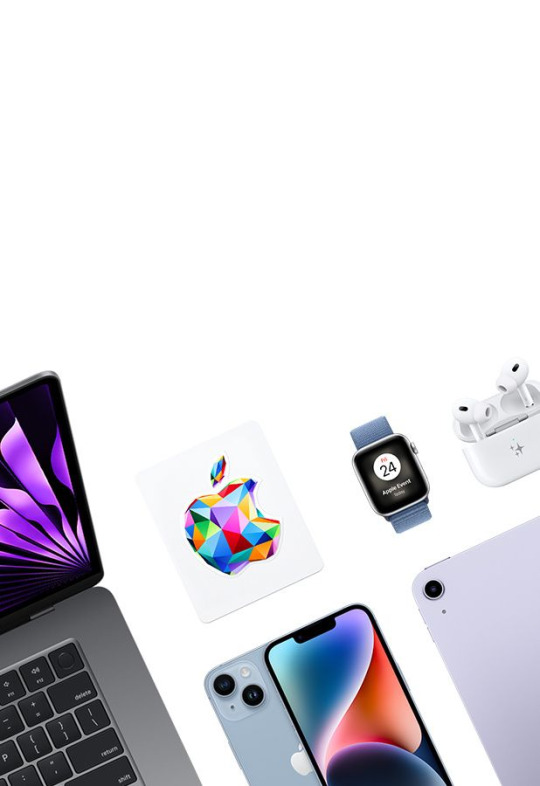
In today’s digital world, most people own a smartphone—but what exactly makes a phone “smart”? If you’re new to mobile technology, understanding these powerful smart devices can help you make informed choices when shopping for your next phone.
1. OS (operating systems)
The mobile operating system that powers a smartphone enables it to carry out intricate tasks. The two most popular OS platforms are iOS and Android. Users can engage with these systems' user-friendly interfaces, download apps, and access the internet. All smartphone operations are controlled by the operating system (OS), which also affects compatibility, performance, and user experience in general.
2. Internet Access
Smartphones can use mobile data (3G, 4G, and now 5G) or Wi-Fi to access to the internet. Numerous online activities, including surfing, streaming, emailing, and video calling, are made possible via this connectivity. Many smartphone capabilities would be restricted without internet access, making it no more usable than a simple cell phone.
3. App Stores and Apps
The ability to access an app store, such as Google Play or Apple's App Store, where users can download apps for productivity, education, entertainment, fitness, and other purposes, is one of the distinguishing characteristics of a smartphone. These applications make a phone a useful tool for both business and play by extending its functionality much beyond texting and calling.
4. Superior Cameras
The majority of smartphones have sophisticated camera systems that enable professional-quality photography and video recording. These cameras enable rapid photo capturing, editing, and sharing thanks to their many lenses, high quality, and AI advancements. The phone's camera hardware is also necessary for features like augmented reality and facial recognition.
5. Sensors and Touchscreen
The touchscreen of a smartphone is responsive and easy to use, enabling pinching, swiping, and tapping. Furthermore, sensors including proximity sensors, gyroscopes, GPS, and accelerometers help with device control, fitness tracking, and smarter navigation. Your phone can track your steps, tilt the screen, and even identify when it's close to your ear thanks to these technologies.
6. AI and voice assistants
Artificial intelligence powers voice-activated assistants such as Siri and Google Assistant. Your smartphone can function as a hands-free personal assistant by answering enquiries, sending messages, making calls, and controlling smart home appliances. AI is also involved in camera improvements, energy optimisation, and behavior-based app recommendations.
7. Features of Security
Advanced security features included in contemporary smartphones include encrypted storage, facial recognition, and fingerprint scanning. These features guarantee safe access to apps and services while safeguarding private data. Given the rise in online risks, robust security is a major factor in the designation of these gadgets as "smart."
Finding a smartphone that suits your lifestyle requires knowing these aspects, whether you're selecting your first smartphone or upgrading to a newer one. Celltronics provides professional service and the newest cellphones to satisfy all of your needs if you're searching for trustworthy guidance and a variety of possibilities.
0 notes
Text
North America Wearable Sensor Market Key Companies Profile, Supply, Demand and SWOT Analysis (2021-2028)
North America Wearable Sensor Market Introduction
The burgeoning field of smart wearable devices, which includes smartwatches, fitness trackers, VR headsets, smart wristbands, activity trackers, and sports watches, is marked by the integration of sophisticated technologies like artificial intelligence (AI) and the Internet of Things (IoT). These devices enable users to monitor their health metrics through connected smartphones, tablets, or computers. Propelled by growing consumer understanding, the healthcare sector is experiencing an increasing inclination towards smart wearable devices. Wearable systems such as Fitbits, smartwatches, and pulse oximeters, which incorporate optical sensor technology, provide real-time solutions for tracking patient health.
A particularly high demand exists for photoplethysmography (PPG) sensors, which are vital for the continuous assessment of heart and respiration rates. For example, in the latter part of 2021, a number of smartwatches featuring embedded PPG sensors were introduced by companies like Moto G, Realme, and Apple. Realme's smartwatches offer a comprehensive suite of health-related functionalities, including blood-oxygen-level and high-precision PPG heart rate sensors. Furthermore, in October 2020, Mobvoi launched its TicWatch Pro 3 smartwatch in India, which also features a PPG sensor.
Download our Sample PDF Report
@ https://www.businessmarketinsights.com/sample/BMIRE00025225
North America Wearable Sensor Strategic Insights
Strategic insights pertaining to the North America Wearable Sensor market present a rigorous, data-centric evaluation of the industry's landscape, encompassing prevailing trends, key market actors, and regional variations. These insights provide implementable recommendations, empowering readers to establish a competitive advantage by identifying unexploited market opportunities or crafting distinctive value propositions. By employing advanced data analytics, these insights support industry participants, including investors, manufacturers, and other stakeholders, in predicting future market developments. Maintaining a forward-looking perspective is crucial, assisting stakeholders in anticipating market shifts and strategically positioning themselves for sustained growth within this dynamic region. Ultimately, effective strategic insights equip readers to make well-informed decisions that drive profitability and facilitate the attainment of their strategic business objectives within the market.
North America Wearable Sensor Market Segmentation
North America Wearable Sensor Market: By Sensor Type
Accelerometer
Gyroscope
Position Sensor
Motion Sensor
Image Sensor
Pressure & Force Sensor
Touch Sensor
North America Wearable Sensor Market: By Application
Smart Wristwear
Smart Glass
Smart Bodywear
Smart Footwear
North America Wearable Sensor Market: By Vertical
Consumer Electronics
Healthcare
Industrial & Enterprise
North America Wearable Sensor Market: Regions and Countries Covered
North America
US
Canada
Mexico
North America Wearable Sensor Market: Market leaders and key company profiles
Texas Instruments Incorporated.
NXP Semiconductor.
Analog Devices Inc.
STMicroelectronics.
Infeneon Technology.
Sensirion AG.
Robert Bosch GmbH.
Panasonic Corporatin.
TE Connectivity Corporation.
TDK corporation.
About Us:
Business Market Insights is a market research platform that provides subscription service for industry and company reports. Our research team has extensive professional expertise in domains such as Electronics & Semiconductor; Aerospace & Defense; Automotive & Transportation; Energy & Power; Healthcare; Manufacturing & Construction; Food & Beverages; Chemicals & Materials; and Technology, Media, & Telecommunications
0 notes
Text
Vibration Testing: Ensuring Reliability and Performance in Engineering
Vibration testing is a crucial process in engineering that evaluates how products, components, and structures respond to vibrational forces. It plays a vital role in product development, quality assurance, and safety verification across a wide range of industries—from automotive and aerospace to electronics and manufacturing.
What Is Vibration testing?
Vibration testing involves subjecting an object or system to controlled vibration stimuli to simulate real-world conditions it will face during operation or transportation. This testing helps engineers identify potential weaknesses, structural flaws, or performance issues caused by mechanical vibrations, shocks, or resonances.
The tests can replicate various vibration types, including sinusoidal (steady-state), random (non-periodic), and shock vibrations. Testing equipment typically uses electrodynamic or hydraulic shakers to generate these vibrations in controlled environments.
Why Is Vibration Testing Important?
Many products encounter vibrations during their lifecycle—whether from vehicle engines, machinery, road bumps, or even airborne turbulence. These vibrations can cause material fatigue, component loosening, electronic failures, or noise problems.
Vibration testing ensures:
Durability and Longevity: By exposing products to accelerated vibration cycles, manufacturers can predict and improve product lifespan.
Safety: Identifying failure points helps prevent catastrophic malfunctions that could endanger users.
Performance Validation: Ensures the product operates reliably under expected vibration environments.
Compliance: Many industries must meet regulatory standards (like MIL-STD-810 for military equipment) requiring vibration testing.
Types of Vibration Testing
Sinusoidal Vibration Testing This involves applying single-frequency vibrations in a controlled sweep. It is useful for identifying resonance frequencies where the product may experience excessive movement or stress.
Random Vibration Testing This simulates real-life vibration environments with non-repetitive frequencies and amplitudes. It’s commonly used to mimic road or aircraft vibrations.
Shock Testing Shock tests subject products to sudden, high-impact forces, such as drops or bangs, to assess their resilience against extreme events.
How Is Vibration Testing Performed?
The typical setup includes mounting the test specimen on a shaker table connected to a vibration controller. Sensors such as accelerometers measure the response during testing. Engineers can adjust vibration frequency, amplitude, and duration according to test plans derived from real-world scenarios or standards.
Advanced software collects data to analyze product behavior, detect potential failure modes, and guide design improvements.
Applications of Vibration Testing
Automotive Industry: Ensuring components like engines, suspension, and electronics withstand road vibrations.
Aerospace: Testing aircraft parts against in-flight turbulence and ground handling shocks.
Consumer Electronics: Verifying that devices can survive drops and everyday vibrations without damage.
Industrial Machinery: Assessing durability of heavy equipment and reducing maintenance costs.
Conclusion
Vibration testing is an indispensable part of modern engineering, providing valuable insights into how products will perform and endure in their real operating environments. By identifying vulnerabilities early, manufacturers can enhance product design, improve reliability, and comply with stringent industry standards. Whether you’re designing the next-generation smartphone or an aircraft component, vibration testing helps ensure your product stands strong against the forces of motion.
0 notes